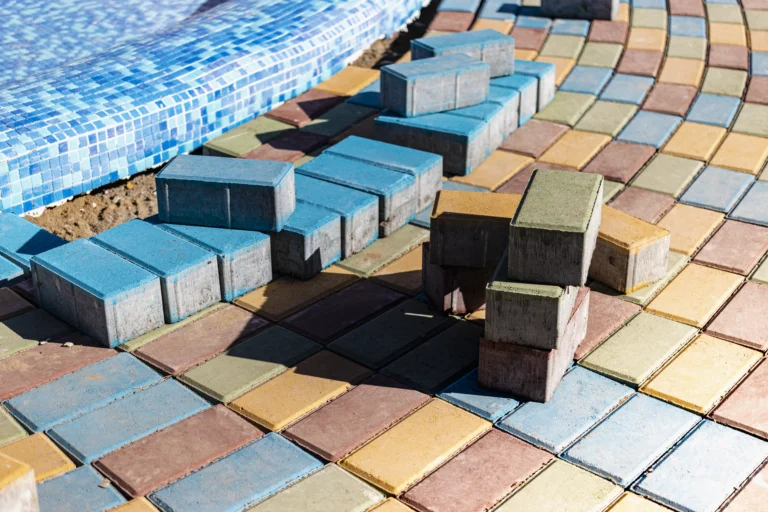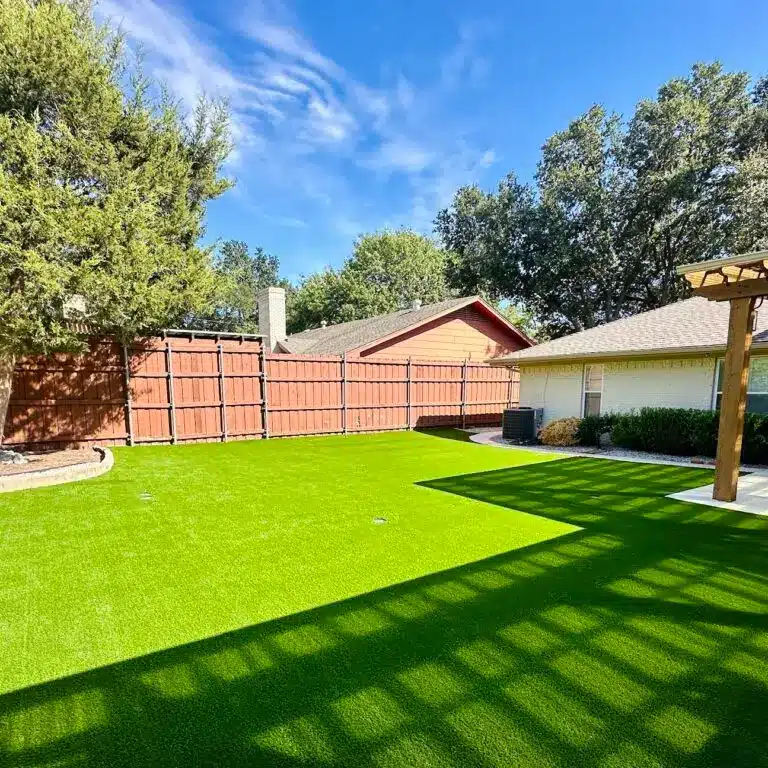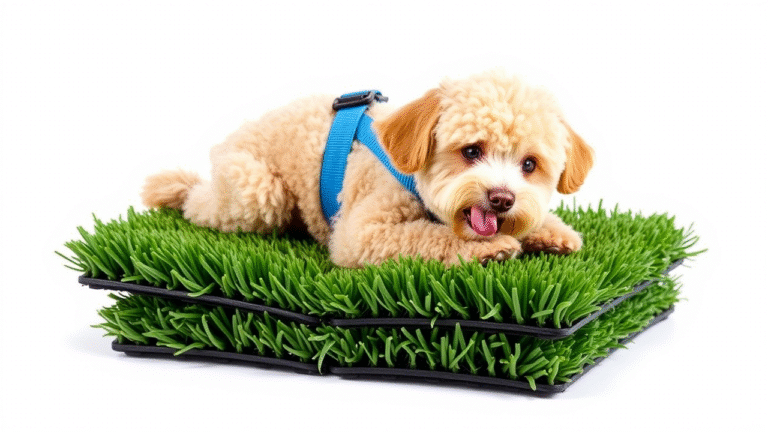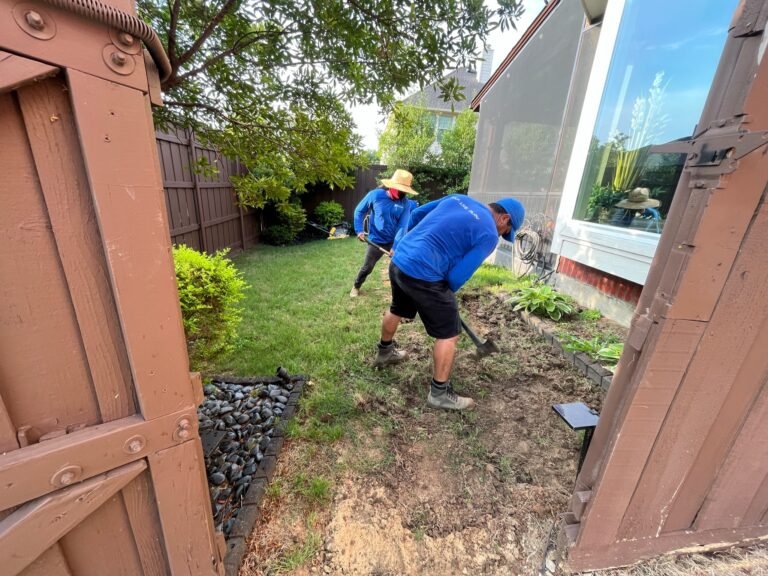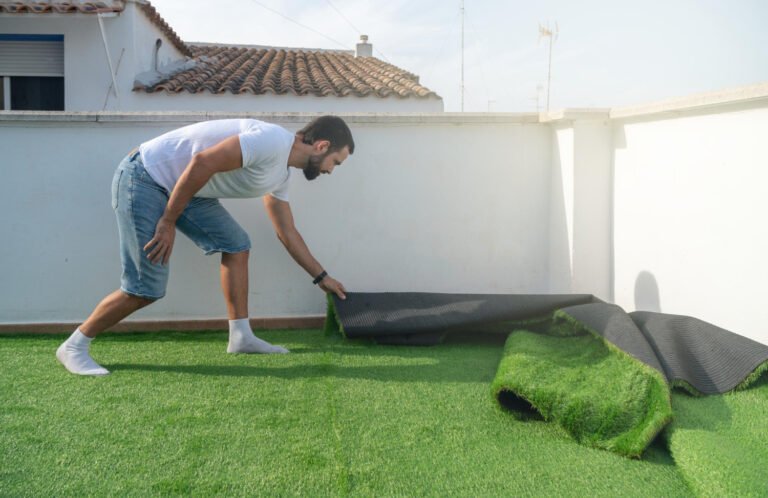20 Pet Turf FAQs & Answers About Artificial Turf for Dogs
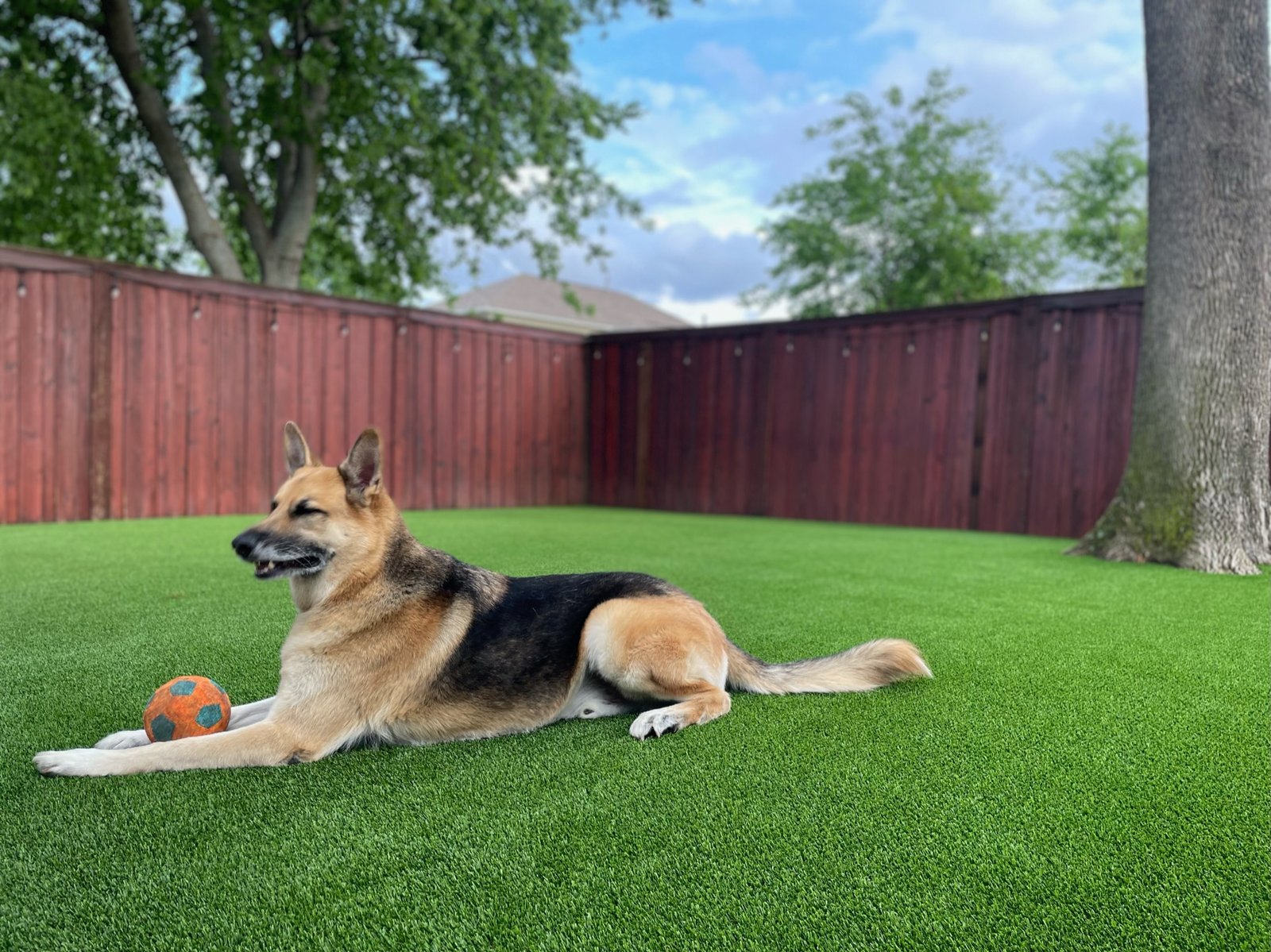
Are you looking for a stress-free way to maintain a beautiful backyard that your furry friends will love? If so, you’ve likely heard of “pet turf”—but what exactly is it, and is it right for your outdoor space?
Pet-friendly artificial turf offers a year-round, lush green lawn that requires minimal effort. It’s an increasingly popular choice among pet owners who want a pristine yard without the headaches of traditional lawn care.
At Pave-N-Turf, we aim to empower homeowners with expert advice on how to choose the best pet-friendly turf solution for their needs.
What to Expect in This FAQ
In this comprehensive guide, we’ll answer 20 frequently asked questions about pet-friendly artificial turf. From understanding the differences between regular turf and pet turf to maintenance tips and long-term benefits, you’ll get everything you need to make an informed decision.
Whether you want to minimize lawn upkeep or create a cozy, durable play area for your pets, this FAQ has you covered.
Let’s get started so your entire household—including your four-legged friends—can enjoy a clean, safe, and beautiful backyard!
What You’ll Learn from This Guide:
- The unique features of pet-friendly turf vs. regular turf
- How artificial turf holds up to pet activity
- Best practices for cleaning and maintaining your turf
- Pro tips for extending the lifespan of your artificial lawn
By the end, you’ll see how pet-friendly turf transforms your space and benefits your whole family—including Cooper—while Pave-N-Turf helps you create a perfect yard.
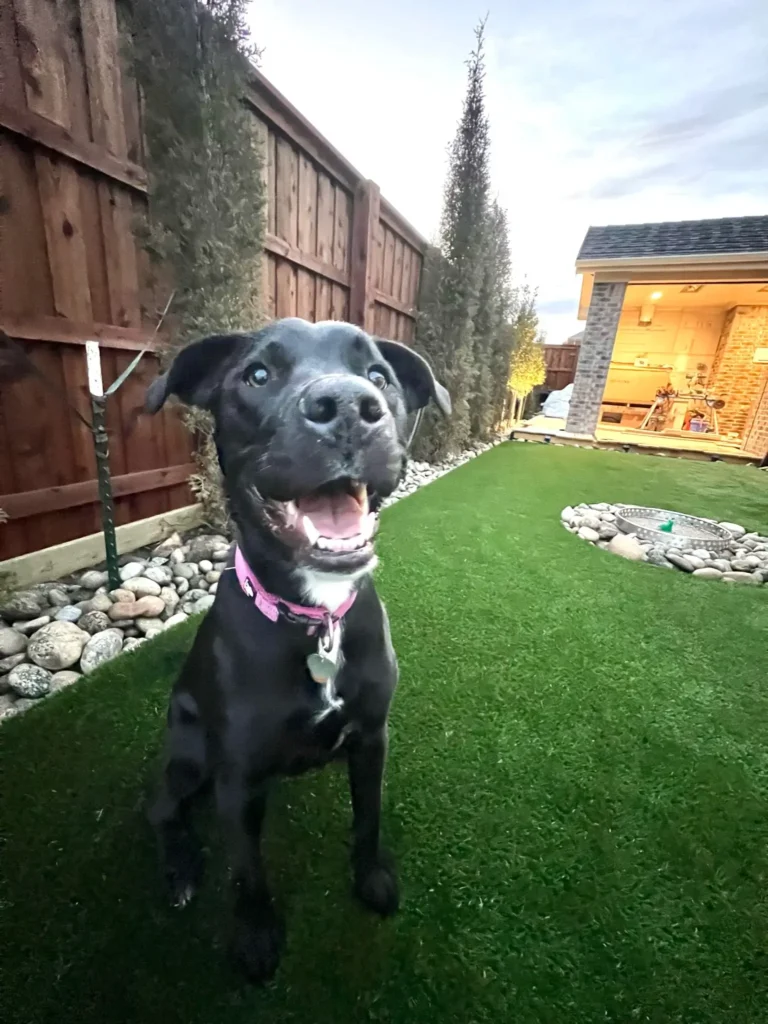
1. Is Artificial Grass Safe for Dogs?
For dog owners seeking a low-maintenance lawn that looks lush all year round, artificial grass has become an increasingly popular option. However, many pet parents may wonder: is artificial grass safe for dogs?
The reassuring answer is yes. Reputable artificial grass products are specifically designed with pet safety in mind.
These synthetic turfs are crafted from non-toxic materials, meaning that even if your pup decides to chew or accidentally ingest small amounts while playing, there’s no cause for alarm.
Key Benefits of Artificial Grass for Dogs
- Pet-Safe Materials: Non-toxic and safe for accidental ingestion.
- Durability: Can handle high-energy play without damage.
- Paw-Friendly: Comfortable surface that won’t harm paws or joints.
- Odor Control: Permeable backing allows for efficient drainage, preventing lingering smells.
With the combination of safety, durability, and minimal maintenance, artificial grass is an ideal choice for dog owners looking to create a beautiful, pet-friendly outdoor space.
You can enjoy a pristine lawn while giving your furry friend a comfortable place to play—all without sacrificing your peace of mind.
2. Real Grass vs. Artificial Grass: Which is Better for Dogs?
If you’re debating between installing real grass or artificial grass for your beloved dog, you’re not alone. Both options come with their pros and cons, so it’s essential to choose based on your lifestyle and your pet’s needs.
Real Grass
- Pros:
- Natural sensory stimulation.
- Safe for dogs to sniff and occasionally nibble.
- Helps keep temperatures cooler, providing a soft, natural surface.
- Cons:
- Requires significant upkeep (watering, fertilizing, mowing).
- Susceptible to brown patches from dog urine.
- Lawn care treatments can introduce harmful chemicals.
Artificial Grass
- Pros:
- Minimal maintenance—no watering, mowing, or chemical treatments needed.
- High durability and resistant to wear and tear.
- Features cooling technology to reduce heat absorption.
- Easy to clean—rinse away messes for a fresh, odor-free lawn.
- Cons:
- Can become hot during peak summer months (consider shaded areas or cooling features).
Check out more about the benefits of artificial grass vs natural grass.
3. Pet Turf vs. Regular Turf: What’s the Difference?
Creating a safe and comfortable outdoor space for your furry friend starts with choosing the right type of turf. Here’s a breakdown of the key differences between pet turf and regular turf:
Backing and Drainage
- Pet Turf: Equipped with a fully permeable “flow-through” backing that allows liquids, including dog urine, to drain efficiently across the entire surface.
- Regular Turf: Uses a hole-punched backing with drainage holes spaced every few inches, which can lead to pooling and odor buildup.
Pile Height
- Pet Turf: Designed with a shorter pile height, making it easier to remove pet waste and keep the surface clean.
- Regular Turf: Often features longer blades that can trap waste, making cleanup more difficult and time-consuming.
Durability
Regular Turf: May degrade quickly under frequent pet activity and require replacement sooner.
Pet Turf: Built to withstand heavy pet use and resist wear and tear.
4. Does Artificial Turf Drain Dog Pee?
For dog owners, one major concern is how to manage pet urine on their lawn. Artificial turf provides a practical solution for this issue.
How Drainage Works
- Design for Drainage: High-quality artificial turf is equipped with a permeable backing that directs liquids away from the surface and into a sub-layer of gravel or crushed stone.
- Odor Control: By efficiently channeling urine away, artificial turf prevents unpleasant odors and keeps your yard looking pristine.
With its drainage capabilities, artificial turf keeps your yard fresh and minimizes the maintenance typically needed to address pet-related messes.
5. How Do You Clean Pet Turf After Dog Pee?
While pet turf drains urine efficiently, regular cleaning ensures it stays in top condition.
Cleaning Tips
- Routine Rinse: Use a garden hose to rinse the turf once a week, especially during dry weather.
- Thorough Cleaning: For a deeper clean, use an enzyme-based turf cleaner that attaches to your hose once or twice a year to break down any residue.
By following these simple maintenance steps, you can keep your pet-friendly turf looking great and odor-free, ensuring it remains a clean and enjoyable play area for your furry companion.
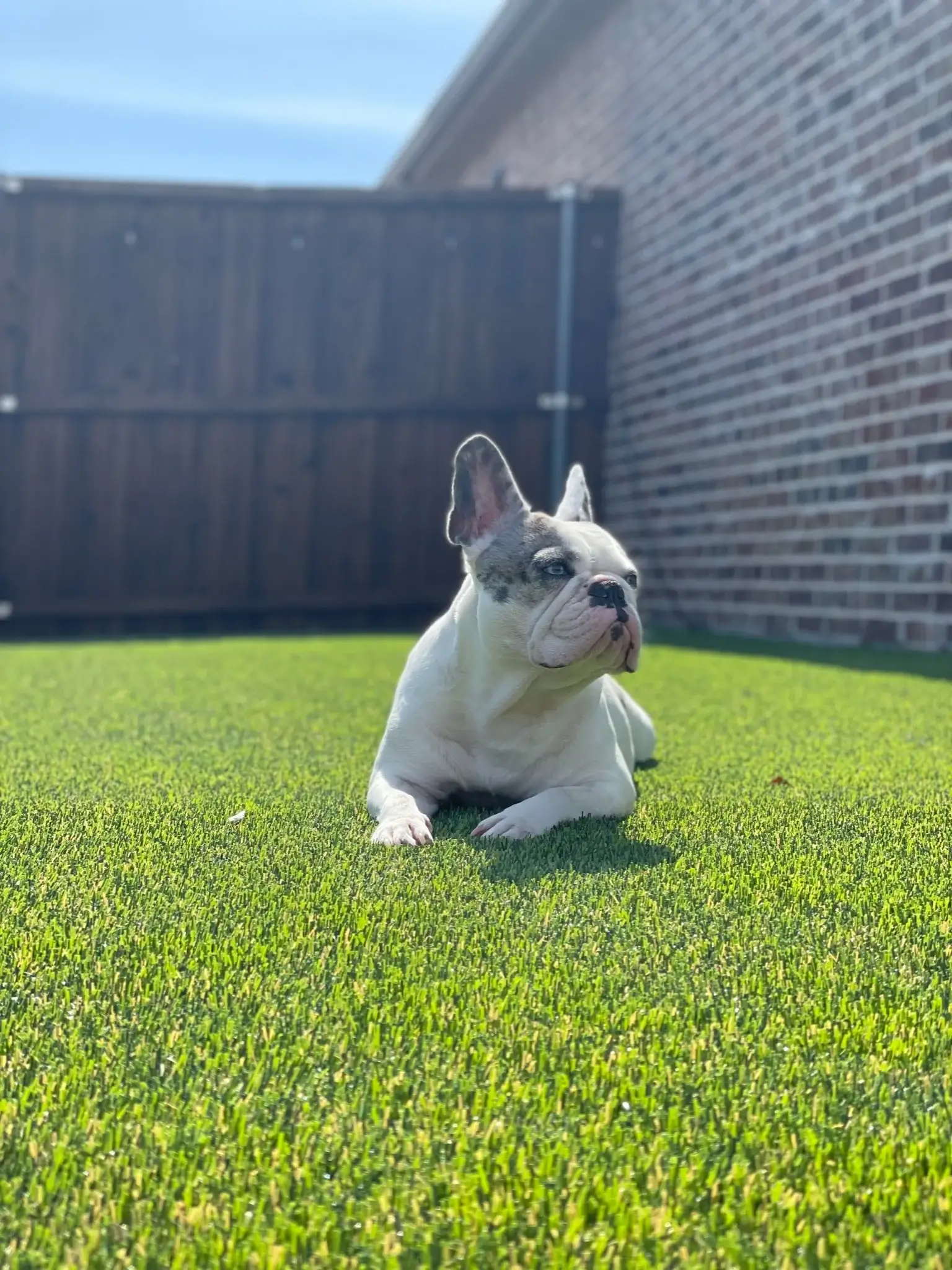
6. How Do You Clean Pet Turf After Dog Poop?
Let’s be real—dealing with dog poop is part of the pet parent life. But cleaning it off pet turf? Super simple!
Step-by-Step Poop Cleanup
- Step 1: Let It Firm Up: If the poop is soft, give it a little time to solidify. Trust us—this prevents a messy smear situation.
- Step 2: Scoop It Up: Grab your trusty doggy bag or pooper scooper and remove the solid waste.
- Step 3: For the “Oops Moments”: If things get messy (hello, diarrhea days!), don’t panic. Use paper towels to lift as much as you can.
- Step 4: Rinse It Down: Use a garden hose to rinse away any residue—no scrubbing needed!
The best part? No muddy mess like with natural grass. Your turf stays fresh and clean, ready for more playtime with your pup!
7. Why Does Some Pet Turf Have Antimicrobial Protection?
Ever wondered why some pet turf boasts “antimicrobial protection”? It’s not just a fancy buzzword—it’s a game-changer for keeping your turf fresh.
The Benefits of Antimicrobial Turf
- Odor Defense: Antimicrobial additives help stop odor-causing bacteria in their tracks, so your yard stays fresh.
- Long-Lasting Protection: The antimicrobial feature is built into the turf during manufacturing, so it won’t wear off or fade over time.
- Durability Boost: By preventing bacteria buildup, antimicrobial turf helps prevent premature breakdown, making your turf last longer.
In short, antimicrobial protection gives you an extra layer of confidence. Your pet-friendly lawn stays cleaner, smells better, and stands up to the test of time—because your pup deserves the best!
8. Where Can Pet-Friendly Turf Be Installed?
Wondering where you can install pet-friendly artificial turf? The short answer: almost anywhere!
One of the greatest perks of synthetic grass is its versatility. Whether it’s for a personal haven or a bustling pet business, dog-friendly turf turns any space into a green, durable paradise.
Popular Pet Turf Spots:
- Residential Yards: Your backyard can become your dog’s playground without muddy paws or patchy grass.
- Dog Parks & Dog Runs: Say goodbye to worn-out, patchy areas—turf holds up to even the wildest zoomies!
- Dog Kennels & Shelters: A comfy, low-maintenance option that keeps shelter dogs happy while cutting down cleaning time.
- Veterinarians & Pet Care Facilities: Keeps outdoor areas sanitary and inviting for pets and their humans.
- Apartment Complexes: Great for common dog relief areas, making pet-friendly living stress-free for residents.
No matter the location, from residential to commercial, pet-friendly turf brings beauty, cleanliness, and durability to any space where dogs love to roam.

9. Does Pet-Friendly Turf Get Hot?
When the sun’s blazing, most outdoor surfaces heat up—and pet-friendly turf is no exception. And let’s be real, Texas doesn’t just get hot—it brings the heat in full force!
But here’s the good news: turf doesn’t hold and radiate heat like brick, pavement, or rocks do.
Why Does Turf Get Hot?
Unlike natural grass, which has water coursing through it to help with cooling, synthetic turf doesn’t have the same built-in temperature regulation.
Ways to Keep Your Turf Cool
- Provide Shade: Make sure there’s a shady spot where your dog can chill out and cool off.
- Quick Hose Rinse: A fast spray with the garden hose can work wonders—dropping the turf temperature almost instantly.
- Moisture-Holding Infill: Some turf systems come with infill that holds moisture and slowly releases it, acting like a mini cooling system.
So, while pet-friendly turf might warm up on sunny days, a few simple tweaks can keep it paw-friendly and ready for fun, even in the heat.
10. How Do You Clean & Maintain Artificial Pet Turf?
Taking care of pet turf is surprisingly easy—much simpler than natural grass. Let’s break it down:
Maintenance Tips:
- Pick Up Waste Regularly: Just like with a regular lawn, scoop up solid waste to keep things tidy.
- Weekly Rinse: Use a garden hose to rinse the turf and wash away any dirt or residue.
- Enzyme Cleaner Magic: Once in a while, use an enzyme-based cleaner to tackle any lingering odors and break down bacteria.
Pet-friendly synthetic turf is designed to make life easier for pet parents and facility owners. So, you can spend less time worrying about upkeep and more time watching your furry friend enjoy their outdoor oasis.
In short: turf maintenance is a breeze—and your lawn stays fresh, clean, and beautiful year-round!
11. How Long Does Turf Last for Pets?
When it comes to durability, we’ve got you covered. With over a decade of experience perfecting our installation techniques, our artificial grass is built to last anywhere from 10 to 25 years.
Of course, several factors come into play when it comes to longevity.
What Affects Turf Lifespan?
- Foot Traffic: The more playtime, the more wear and tear.
- Yarn Type: Some fibers are tougher and more resilient.
- Pile Height: The right blade length makes a difference.
But don’t worry—we’ll help you choose the perfect turf that matches your lifestyle and your pet’s energy level.
With our expert guidance and top-tier synthetic grass, you’ll get the most out of your turf and enjoy a stunning backyard for years to come!
12. Can Dogs Dig Holes in Synthetic Grass?
If you’re tired of your dog turning your yard into a digging zone, you’re in luck!
Pet-friendly synthetic turf is designed to handle all the rough-and-tumble antics your dog can throw at it.
Why Synthetic Grass Stops Digging:
Goodbye, Muddy Paws: No more holes means no more mud—and no more paw prints tracked into your house!
Durable Design: The tough, layered structure makes digging nearly impossible.
And speaking of muddy paws…
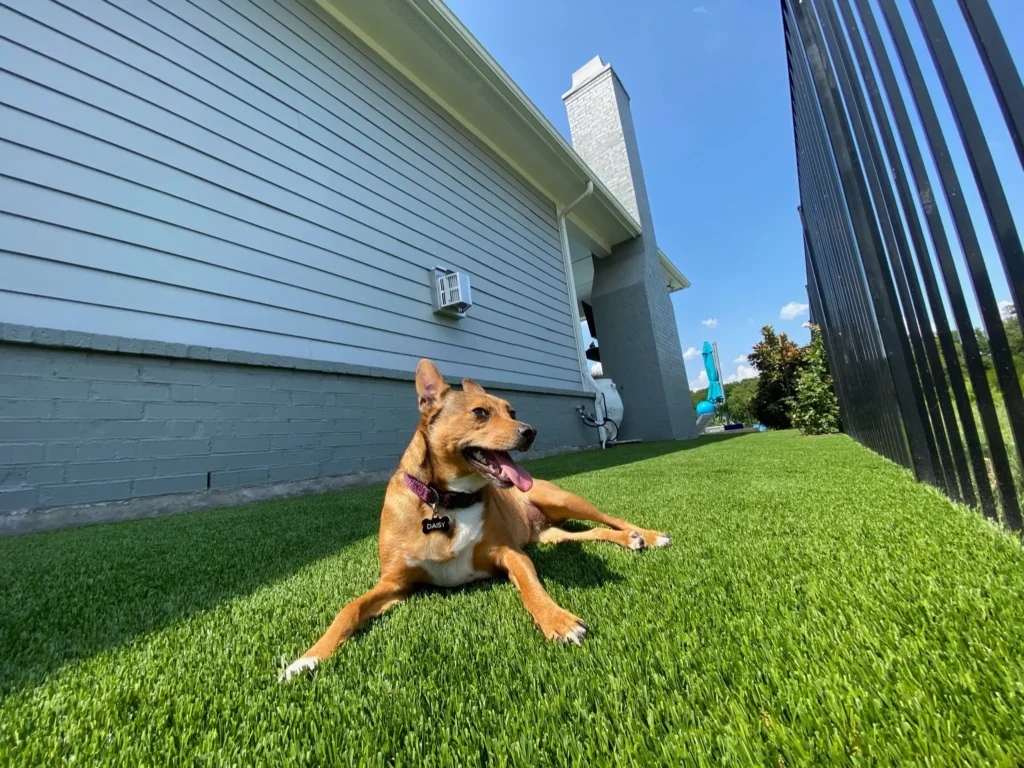
13. Does Pet Turf Get Muddy?
In short, nope! Pet turf doesn’t get muddy like natural grass does.
Why No Mud?
- Smart Drainage: Artificial grass is designed to let rainwater and dog urine flow right through the backing.
- Compacted Sub-Base: Below the turf, several inches of compacted sub-base help water drain into the ground, keeping the surface dry.
This means no puddles and definitely no mud! So when your dog sprints across the yard after a rainstorm, you can relax—no muddy paw prints will be tracking through your house.
It’s just one more reason pet turf is a game-changer for dog owners who want a clean, hassle-free outdoor space.
14. How Much Does Pet Turf Cost?
When it comes to pricing artificial grass projects, there’s no one-size-fits-all answer—it all depends on your project’s specifics.
Factors That Influence Pet Turf Costs:
- Yard Size and Shape: Installation costs increase with square footage, so larger yards require a bigger budget.
- Materials Needed: The amount of turf, infill, and other materials impacts the overall price.
- Design Complexity: A simple layout will cost less than a custom design with intricate features.
- Turf Type: Premium pet-friendly turf with cooling tech or antimicrobial properties may have a higher price tag.
- Preparation and Labor: Costs may rise if old grass needs to be removed or the site requires excavation.
Pro Tip:
Avoid contractors who offer a flat fee regardless of your yard’s specifics. A trustworthy turf company will provide a tailored estimate that reflects your exact needs.
By choosing a reputable team, you’ll get a high-quality installation that’s worth every penny—and your yard will be pet-perfect for years to come!
Think you’re ready? Get a quote now!
Additional Resources:
15. Does Pet-Friendly Synthetic Turf Smell Bad?
Artificial grass itself doesn’t smell, but dog urine can be a different story—especially when pets use the same spots repeatedly.
How to Prevent Odors:
- Antimicrobial Additives: Some pet turf products are infused with antimicrobial protection during manufacturing to help fight bacteria buildup.
- Homemade Cleaning Solution: A simple mix of water and vinegar is perfect for neutralizing odors in your pet’s favorite bathroom spots.
With these tips, your lawn stays fresh and your nose stays happy!
16. What is Artificial Grass for Dogs Made Of?
Artificial dog grass is made from safe, non-toxic materials that are built to last.
Common Turf Materials:
- Polypropylene: The most popular choice due to its durability and affordability.
- Nylon: Extremely durable but more rigid and abrasive—often used in putting greens.
- Polyethylene: The softest option, often used for the thatch layer but less durable overall.
No matter the material, pet-friendly artificial grass is lead-free and safe for your furry friends.
17. Can Fleas & Ticks Live in Artificial Grass?
One of the hidden perks of artificial turf is its natural resistance to pests.
Why Pests Hate Turf:
- Non-Organic Surface: Since synthetic turf isn’t organic, it doesn’t provide a nesting ground for fleas and ticks.
- No Dirt = No Nests: Without dirt for breeding, pests are less likely to stick around.
While it’s not a 100% pest-proof solution, regular cleaning and removing debris will help keep your turf pest-free and your pets happy.
18. What Goes Under Fake Grass for Dogs?
A well-installed pet turf system is made up of several layers that work together for stability, comfort, and drainage.
Turf System Components:
- Sub-Base: A compacted layer of stone that supports the turf and allows water to drain through.
- Weed Membrane: An optional fabric layer that prevents weeds from growing through (but may trap odors if not maintained).
- Artificial Turf: The top layer stretched tight and secured with nails or adhesives.
- Infill: A layer that adds weight, keeps the turf fibers upright, and provides a soft, cushiony feel.
When installed correctly, these layers create a durable, comfortable surface your dog will love.
To learn more about installing artificial grass for dogs, check out our overview of the installation process and why Pave-N-Turf stands second to none against the competition.
20. Where Can I Learn More About Pet Turf?
Your search for all things pet turf ends here!
Check Out These Resources:
- The Pave-N-Turf Blog: Packed with tips and articles on artificial grass and pet-friendly outdoor spaces.
- Feature Guides: Learn everything from drainage options to antimicrobial turf and financing.
- Installation Tips: Get insights on what goes into creating the perfect pet-friendly lawn.
The first step to building the ideal pet-friendly yard is knowing your options. Whether you want to revamp your backyard, create a dog run, or install turf for your patio, our expert team at Pave-N-Turf is here to help.
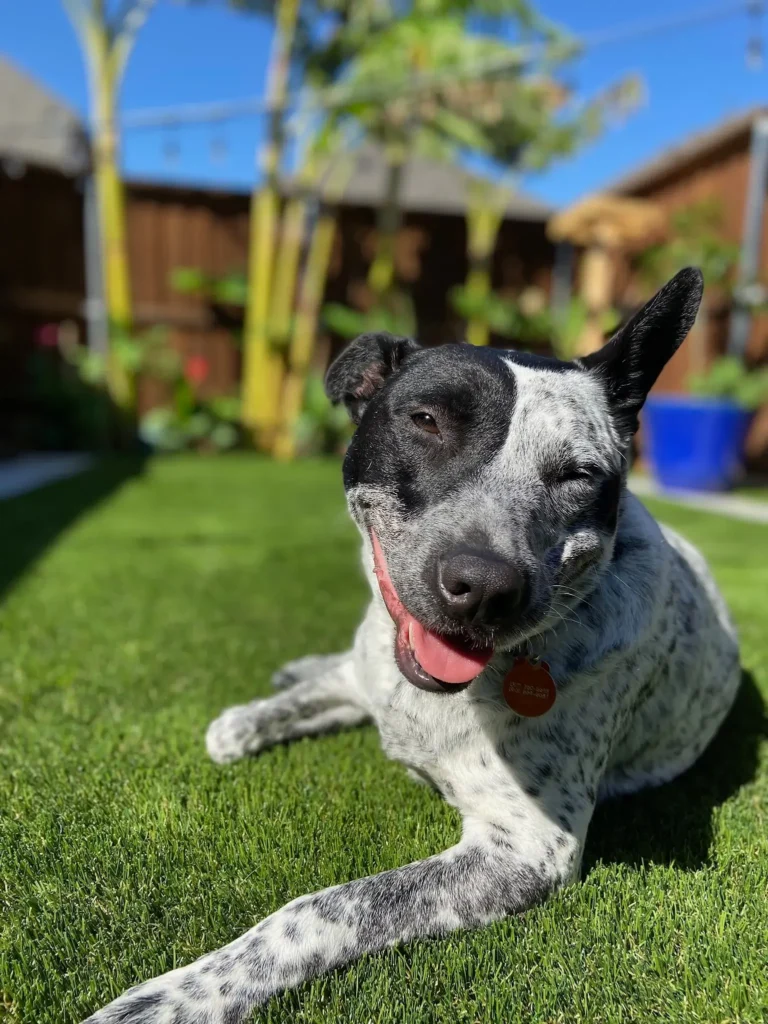
Wrapping Up Our Pet Turf FAQs
Artificial grass offers so many benefits for both you and your pup! It’s soft, low-maintenance, and free from fertilizers and mud. Plus, it can last for years—saving you time and money.
With a variety of colors, textures, and uses (like puppy areas, patios, and kennels), there’s an option to suit every home.
We hope our FAQ helped you understand the perks of pet-friendly turf. If you’re ready to upgrade your space or have more questions, don’t hesitate to reach out!
Ready to transform your space? Let’s make it paw-some!
Visit our website or contact us today—we’re excited to help you create a pet-perfect oasis that both you and your furry friend will love.

